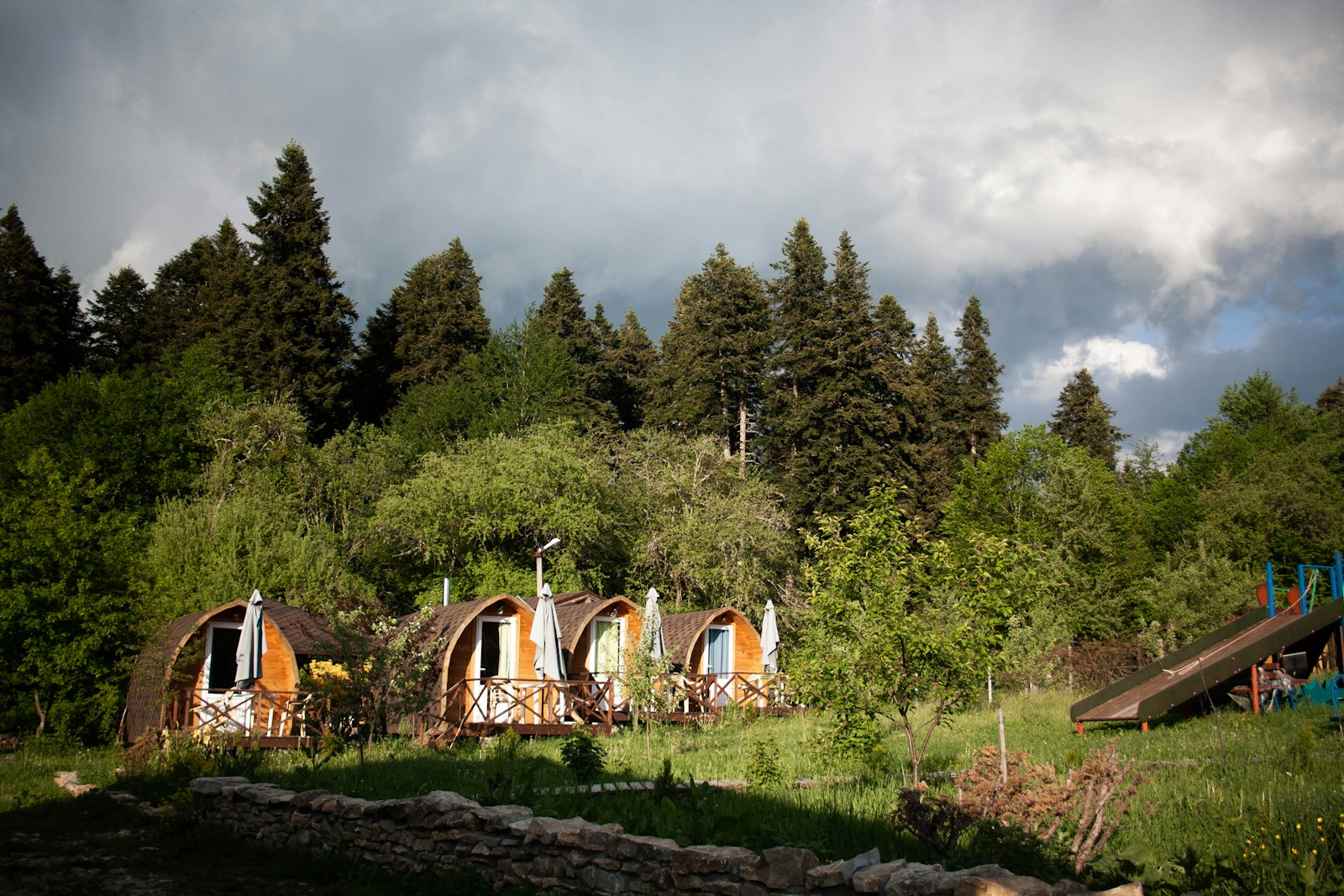In a world facing escalating environmental challenges, the need for sustainable living has never been more urgent. Eco-homes, designed to minimize their impact on the environment while maximizing energy efficiency and comfort, are emerging as the future of residential architecture. Embracing eco-friendly home design not only benefits the planet but also enhances the well-being and quality of life for homeowners. This ultimate eco-home design guide explores the key elements and strategies to create a greener future for all.
Why Eco-Homes are the Future of Sustainable Living
Eco-homes represent a shift towards sustainable living practices that prioritize the conservation of resources and reduction of carbon footprint. By incorporating energy-efficient technologies and eco-friendly materials, these homes significantly reduce energy consumption and promote a healthier living environment. As the global population grows and urbanization intensifies, eco-homes offer a viable solution to mitigate the environmental impact of residential development and combat climate change.
The Impact of Eco-Homes on the Environment
The construction and operation of traditional homes contribute to a significant portion of greenhouse gas emissions and waste generation. In contrast, eco-homes are designed to minimize energy consumption, reduce water usage, and promote recycling and waste reduction. By adopting sustainable practices, eco-homes help preserve natural resources, protect biodiversity, and mitigate the negative effects of climate change on the environment. Building and living in eco-homes can play a crucial role in fostering a more sustainable future for our planet.

Key Elements of a Truly Eco-Friendly Home
A truly eco-friendly home incorporates a combination of design features and technologies that maximize energy efficiency and minimize environmental impact. Key elements include passive solar design, high-performance insulation, energy-efficient appliances, water-saving fixtures, and eco-friendly materials. By integrating these elements into the design and construction of a home, homeowners can significantly reduce their carbon footprint and create a more sustainable living space.
Harnessing Renewable Energy for Eco-Homes
Renewable energy sources such as solar, wind, and geothermal power offer sustainable alternatives to traditional fossil fuels for powering eco-homes. By installing solar panels, wind turbines, or geothermal heat pumps, homeowners can generate clean energy on-site and reduce their reliance on grid electricity. In addition to lowering energy bills, harnessing renewable energy sources helps reduce greenhouse gas emissions and promote a more sustainable energy future.
Sustainable Materials for Green Home Construction
Choosing eco-friendly materials for construction is essential to the sustainability of an eco-home. Sustainable materials such as bamboo, reclaimed wood, recycled glass, and low-VOC paints not only reduce the environmental impact of construction but also improve indoor air quality and promote healthier living spaces. By selecting materials that are responsibly sourced and manufactured, homeowners can minimize waste and contribute to a more sustainable building industry.
Water Conservation Techniques for Eco-Homes
Water conservation is a critical aspect of eco-home design, as water scarcity becomes an increasingly pressing issue worldwide. Implementing water-saving fixtures, rainwater harvesting systems, and drought-resistant landscaping can significantly reduce water consumption and promote sustainable water management. By incorporating efficient irrigation systems and greywater recycling, homeowners can minimize water waste and contribute to the preservation of this precious resource.

Maximizing Natural Light and Ventilation in Your Home
Maximizing natural light and ventilation in a home not only enhances energy efficiency but also improves the overall comfort and well-being of occupants. By strategically placing windows, skylights, and light shelves, homeowners can reduce the need for artificial lighting and cooling, thereby lowering energy usage. Natural ventilation systems, such as operable windows and passive cooling techniques, can help maintain indoor air quality and create a healthier living environment.
The Role of Smart Technology in Eco-Home Design
Smart technology plays a crucial role in enhancing the energy efficiency and sustainability of eco-homes. Smart thermostats, lighting controls, and home automation systems allow homeowners to optimize energy usage, monitor indoor conditions, and remotely control appliances for maximum efficiency. By integrating smart technology into eco-home design, homeowners can reduce energy waste, lower utility costs, and enhance the overall performance of their homes.
Creating a Healthy Indoor Environment in Your Home
Creating a healthy indoor environment is essential for the well-being of occupants in an eco-home. By using low-VOC paints, natural materials, and proper ventilation systems, homeowners can improve indoor air quality and reduce exposure to harmful pollutants. Indoor plants, air purifiers, and humidity control systems can further enhance the health and comfort of residents, creating a space that promotes physical and mental well-being.

How to Reduce Waste and Promote Recycling at Home
Reducing waste and promoting recycling are key practices for maintaining the sustainability of an eco-home. Implementing a waste management plan, composting organic materials, and segregating recyclables can help minimize the amount of waste sent to landfills and reduce the environmental impact of household activities. By adopting a circular economy approach, homeowners can contribute to a more sustainable lifestyle and protect the planet for future generations.
Eco-Friendly Landscaping: Enhancing Your Home’s Green Credentials
Eco-friendly landscaping not only enhances the aesthetic appeal of a home but also contributes to its sustainability. By planting native species, installing permeable surfaces, and using rain gardens, homeowners can reduce water runoff, improve soil health, and support local biodiversity. Sustainable landscaping practices, such as xeriscaping and organic gardening, can help conserve water, reduce chemical usage, and create a harmonious outdoor environment that complements the eco-friendly design of the home.
The Financial Benefits of Investing in an Eco-Home
Investing in an eco-home offers long-term financial benefits for homeowners, including lower utility bills, increased property value, and potential tax incentives. Energy-efficient homes are more cost-effective to operate, with reduced energy and water expenses compared to traditional homes. In addition, eco-homes often command higher resale values and appeal to environmentally conscious buyers, making them a sound investment for the future. By prioritizing sustainability and energy efficiency in home design, homeowners can enjoy both environmental and financial rewards.
As we strive towards a greener future, eco-homes stand as beacons of sustainable living and responsible stewardship of the environment. By embracing eco-friendly design principles, harnessing renewable energy sources, and promoting sustainable practices, homeowners can create spaces that not only reduce their environmental impact but also enhance their quality of life. The ultimate eco-home design guide serves as a roadmap for building a brighter, more sustainable future for generations to come. Let us all take inspiration from these principles and work towards creating a world where eco-homes are the norm rather than the exception.












